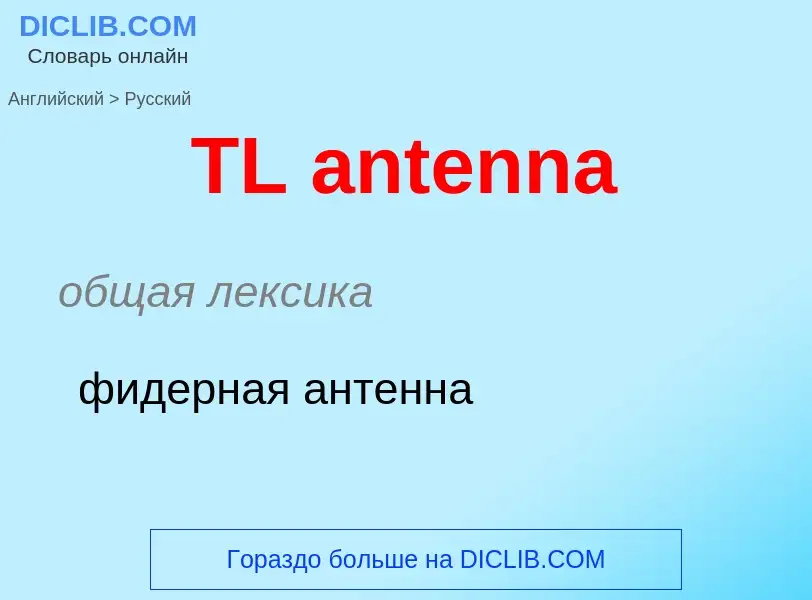Tradução e análise de palavras por inteligência artificial ChatGPT
Nesta página você pode obter uma análise detalhada de uma palavra ou frase, produzida usando a melhor tecnologia de inteligência artificial até o momento:
- como a palavra é usada
- frequência de uso
- é usado com mais frequência na fala oral ou escrita
- opções de tradução de palavras
- exemplos de uso (várias frases com tradução)
- etimologia
TL antenna - tradução para russo
общая лексика
фидерная антенна
общая лексика
антенна
Definição
Wikipédia

A monopole antenna is a class of radio antenna consisting of a straight rod-shaped conductor, often mounted perpendicularly over some type of conductive surface, called a ground plane. The driving signal from the transmitter is applied, or for receiving antennas the output signal to the receiver is taken, between the lower end of the monopole and the ground plane. One side of the antenna feedline is attached to the lower end of the monopole, and the other side is attached to the ground plane, which is often the Earth. This contrasts with a dipole antenna which consists of two identical rod conductors, with the signal from the transmitter applied between the two halves of the antenna.
The monopole is often used as a resonant antenna. The rod functions as an open resonator for radio waves and oscillates with standing waves of voltage and current along its length. The length of the antenna, therefore, is determined based on the wavelength of the desired radio waves. The most common form is the quarter-wave monopole, in which the antenna length is approximately one quarter of the wavelength of the radio waves. In broadcasting monopole antennas, however, a length equal to 5/8 = 0.625×wavelength are also popular because at this length a monopole radiates a maximum amount of its power in horizontal directions. The monopole antenna was invented in 1895 by radio pioneer Guglielmo Marconi; for this reason it is sometimes called the Marconi antenna.
The load impedance of the quarter-wave monopole is half that of the dipole antenna or 37.5 Ohms.
Common types of monopole antenna are





![base station]] antennas base station]] antennas](https://commons.wikimedia.org/wiki/Special:FilePath/6 sector site in CDMA.jpg?width=200)


![Typical center-loaded mobile CB antenna with [[loading coil]] Typical center-loaded mobile CB antenna with [[loading coil]]](https://commons.wikimedia.org/wiki/Special:FilePath/CB antenna.jpg?width=200)
![An automobile's [[whip antenna]], a common example of an omnidirectional antenna. An automobile's [[whip antenna]], a common example of an omnidirectional antenna.](https://commons.wikimedia.org/wiki/Special:FilePath/Car radio antenna extended portrait.jpeg?width=200)

![Diagram of the [[electric field]]s (''<span style="color:blue;">'''blue'''</span>'') and [[magnetic field]]s (''<span style="color:red;">'''red'''</span>'') radiated by a [[dipole antenna]] ('' '''black''' rods'') during transmission. Diagram of the [[electric field]]s (''<span style="color:blue;">'''blue'''</span>'') and [[magnetic field]]s (''<span style="color:red;">'''red'''</span>'') radiated by a [[dipole antenna]] ('' '''black''' rods'') during transmission.](https://commons.wikimedia.org/wiki/Special:FilePath/Felder um Dipol.jpg?width=200)
![Half-wave [[dipole antenna]] Half-wave [[dipole antenna]]](https://commons.wikimedia.org/wiki/Special:FilePath/Half – Wave Dipole.jpg?width=200)
 by night under the Magellanic Clouds.jpg?width=200)
